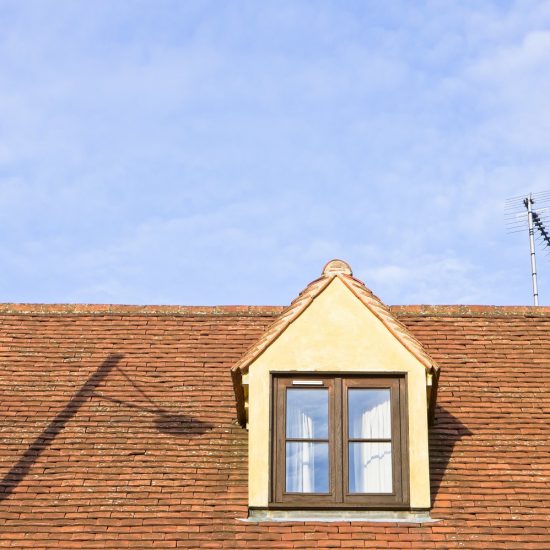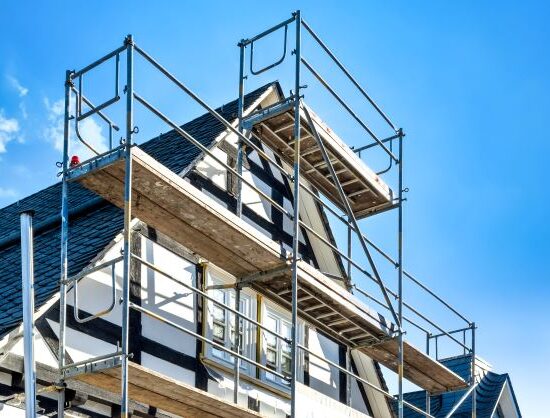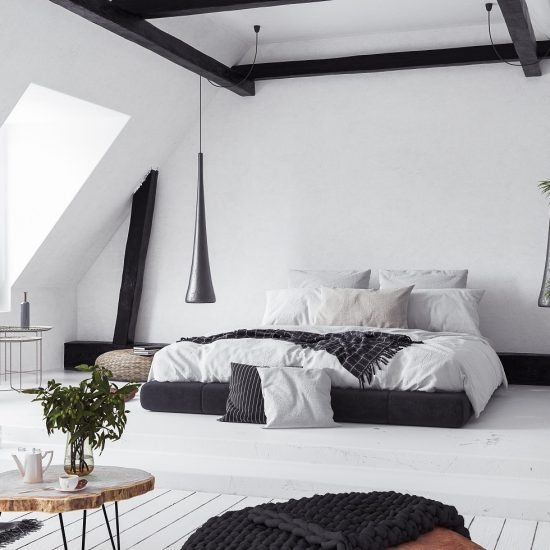To move out or to move up?
In Brighton as well as in other cities all over the UK, families are quickly running out of space, practically bursting out of the seams of their houses, yet moving houses is no longer a practical solution. The high interest rates, high cost of houses and the high cost of moving has made it difficult for most families to rent or buy a larger house that will accommodate them.
An increasing number of home owners are opting for loft conversion as the quickest and easiest way to create usable space in their homes.
You can convert your existing loft into practically any kind of room. Maybe you need an extra bedroom for visitors or to make space for a new member of the family, or you are tired of children turning the living room upside down and would rather they have a play room all to themselves.
Maybe you need an extra bathroom to make your home feel less like a summer camp for children, or you just need a quiet place where you can pursue your hobbies. Whatever the need, you can convert your loft to meet it.
But, apart from creating the much needed usable space, home improvements and extensions such as a loft conversion can significantly increase the value of your home so that if you decide to sell eventually, you will be selling far above the market value.
In fact, those who are in the business suggest that a loft conversion can increase the value of your home by as much as 20%, this will more than make up for your loft conversion expenses. If you are running out of space in your home or need an extra room for any purpose, you can choose to convert your loft rather than face the challenges of getting a new place.
Planning permission for loft conversions
If everyone in the country was allowed to build in any way they pleased, use land wherever they liked and for whatever purpose they wanted, it would result in absolute chaos. The planning system was developed to prevent this and to ensure that every part of the country is properly developed to benefit the people living in the area.
When you want to build a new structure, be it a residential building or a commercial building, you are required to obtain the proper planning permission from the relevant authorities. This also applies to changes, alterations and extensions made to existing structures.
Simply put, planning permission is requesting approval to carry out a certain building project whether from scratch or a modification. Planning permission is usually granted as long as your proposal meets certain conditions otherwise it can be refused.
Planning permission typically falls within the purview of your local planning authority which in the case of Brighton is Brighton and Hove City Council. This is where you can apply for planning permission for any home alteration project. The planning authority can also provide answers to any question you have regarding planning permission, building regulations and other local council development topics. When planning for any alteration such as a loft conversion, it is your responsibility to find out if you need planning permission or not, and if there are any other permissions you need to apply for before the work begins.
Apart from planning permission, there are other approvals you may need before you can commence your loft conversion, thankfully these approvals are not difficult to get.
A professional loft conversion company will be able to help you understand the legalities involved in loft conversion and will likely have experts who can walk you through the process.
At Clifton Hill & Montpelier Loft Conversions, not only do we offer expert loft conversions in Brighton, we also have people on standby who can provide more information on the loft conversion processes and the procedures you need to complete before work starts.
Applying for planning permission
There are many home improvement situations where you must have planning permission approval before you commence work, but a loft conversion project is not one of them. If you are thinking of converting your existing loft into usable space, you don’t need to apply for planning permission unless the loft conversion will mean that you extend or alter the roof beyond the required specification, or make other changes that will affect the plan of the neighborhood.
Loft conversion is recognised as a permitted development which means that you can proceed with loft conversion without seeking planning permission as long as you meet all the necessary building regulations requirements and can comply with certain planning council limits and conditions. Some of the conditions include:
- An allowance of 40 cubic metres as additional roof space for terraced houses.
- An allowance of 50 cubic metres additional roof space for detached and semi-detached houses.
- No extension beyond the plane of the existing roof slope or higher than the highest point of the roof.
- All materials used should be similar in appearance to that of the house.
- Roof extensions cannot be done in houses located in designated areas.
- Certain roof extensions must be at least 20cm from the original eaves of the house.
- Dormer windows facing the front of the house must have planning permission approval but rear facing dormer windows do not require planning permission approval.
Keep in mind that there are situations where a loft conversion will require planning permission approval, such as where the loft conversion will have a very obvious visual effect on your neighborhood. The rules differ by local authority so you may want to find out what is permissible in your area if you are planning for loft conversion outside Brighton.
We suggest that you plan your loft conversion ahead of time and go through the appropriate motions before commencing work. If you find the process confusing or don’t know what to do, our experts can walk you through the process. You will save thousands of pounds and lots of heartache if you consult your local planning authority before jumping into a home alteration.
Important things you need to know about planning permission
If you are considering a loft conversion in your Brighton home, chances are you can proceed without getting planning permission approval. However, this is subject to certain conditions as stipulated by the local planning authority. But in the event that you do need planning permission, maybe because your loft conversion will drastically alter the plan of the neighborhood or for one reason or another, the following information will come in handy when making your planning permission application.
- You don’t have to be the owner of the land in other to make a planning permission application; you can apply for planning permission on any piece of land anywhere in the country as long as you have the legal right to use it.
- Planning permission should not take more than 2 months from the date of application.
- Objections by neighbors and other people in the neighborhood will not exactly affect the decision of the local council buy it is advisable that you get approval from your neighbors especially if the conversion will cause some disruption.
- You can withdraw the planning permission application at any time. This is a good thing as you can withdraw your application and modify the details for resubmission if you feel you are going to get a refusal.
- You can submit as many applications as you want on one project site and choose the one you want from the approved plans.
If your building project requires planning permission approval and you either fail to get the needed approval or fail to comply with the details of the permission, this is known as ‘planning breach’ and can attract an enforcement notice from the local planning authority.
A planning breach is not illegal in itself and the local council will often approve an application that is submitted even after work has commenced. However, if the planning breach involves a previously rejected application or you fail to submit the necessary applications even after a warning, the enforcement notice can compel you to return your house to the state in which it was before you started work. It however becomes illegal when you fail to comply with the enforcement notice but it is also possible to successfully appeal against the enforcement notice. You can appeal against the enforcement notice and even the permission refusal but if the verdict goes against you and you still refuse to comply, you stand the risk of prosecution under the law. That being said, planning permission is almost never needed for a loft conversion but it is your responsibility to make sure that you actually don’t need it.
This is why it is a good idea to involve experts in your planning right from the beginning. At Clifton Hill & Montpelier Loft Conversions, our experts can tell if your loft conversion will need planning permission. We can also walk you through the process of applying and getting the permissions you need before commencing the project. Working together, we can convert your loft into the type of usable space that you can be proud of while at the same time complying with all the necessary local council and building requirements.
FAQ's
During this period, if you decide to make some changes to the approved plan, you can apply to do so, but because the plan has already been approved and go ahead given, you may be required to pay a fee.
Even though developing a property without planning permission is not exactly illegal, it is also not lawful and doing so can put you in trouble with the law. You will also be given an enforcement notice to return the property to its former state and may even pay a fine. However, making changes to a listed building or to a property in a conservation area without proper permission is a criminal offense which can result into criminal prosecution, hefty fines and even imprisonment. It is a better idea to apply and get planning permission approval first before carrying out work on your property. Remember that this may not include loft conversion except where you intend to drastically alter the structure of your house.
Your local planning authority will make its decision based on a number of factors known as material considerations. Some of these material considerations include:
- Possibility of loss of privacy, light or overshadowing
- Parking
- Traffic and highway safety
- Noise
- Effect on Conservation Areas and Listed Buildings
- Design and appearance of building materials
- Government policy
- Access for disabled persons
- Development plans for the community
- Conservation of nature
In some situations, neighbors are called upon to make suggestions and offer insights (especially in England and Wales) but their input will not necessarily affect the decision of the local planning authority except where material considerations are concerned.
When your development project involves building a new house from scratch or making alterations to an existing one, the work has to be done in a way that will not affect the plan of the city or cause discomfort to your neighbors. For this reason, planning permission is required.
If you want to add an extension to your house, the local planning authority has to first confirm that this extension is in line with the plans for the city and will in no way affect distribution of amenities, destroy nature or damage the design of the neighborhood. However, planning permission is usually needed for major development work. Smaller projects like loft conversions are considered permitted development and do not need planning permission.
During this period, a sign may be placed in front of the address where the proposed development is planned so that neighbors who feel the development will affect them can write their concerns to the local planning authority. The authority will also consult with a few important agencies such as the Environmental Agency (for an EIA) and the local highway department before approving or rejecting your application. But if all the necessary information is provided from the start and what you are planning is a straightforward development, you can expect to hear from the council in less than 12 weeks.
Not every building project requires planning permission so it is your duty to find out if the project you have in mind requires planning permission. For example, loft conversion does not require planning permission anywhere in the UK as long as you meet certain conditions. These conditions can be found on the website of your local planning authority or gotten from your architect. Planning Permission is different from consent for use of premises or land. Consent allows you to use the property for the purpose it was originally intended for while planning permission allows you make alterations on the structure or use it for a different purpose.
If you proceed in carrying work on your property without first seeking and receiving planning permission (except in the situations where planning permission is not needed), you could face prosecution under the law and made to undo whatever changes you have already done.
Another option is to amend the proposal and resubmit after dealing with the reasons for refusal. You can submit as many planning permission applications as you want until you get approval for one of them. Records show that about 40% of homeowners who were denied planning permission eventually got approval. That being said, it is not a bad idea if you get approval at your first attempt. This is why we recommend that you involve an expert in your development plans from the beginning. An expert will be able to point out areas where you will have problem with the planning council and help you make corrections immediately.
That being said, the current planning permission fee can be found on the planning portal website. This website also contains a lot of useful information that would come in handy as you plan for a new project or extension. On the planning portal website, you will find information on:
- Planning permission and building regulations;
- How to apply for planning permission or building regulations approval;
- Ongoing developments near your area;
- How to appeal against an unfavourable decision.
Visit the planning portal website at www.planningportal.gov.uk for the necessary information.
If you are unsure of how EIA will affect your project, it may be a good idea to first talk to someone at the planning authority so that you have a better insight and know how to plan your project. Of course, you can always amend your application and reapply as often as you are denied but if you can get it done right the first time, by all means do so.
- 5 copies of the application forms
- A signed copy of the ownership certificate
- A plan of the proposed development
- An Access and Design Statement
- The application fee
The Access and Design Statements are documents that must accompany every planning application. These documents explain the design principles of the proposed project and typically include plans and other illustrations that show how the finished project will look and how users of the property will be able to gain access into the property. These statements typically contain a lot of technical information that would help the planning authority understand the purpose of your building project and how it may affect the neighborhood.
Because of the technical nature of these documents, most planning authorities will provide guidance note that will help you, but your architect or a building expert will be able to put one together for you. In some cases, if these documents are not included in your planning application, the planning authorities can refuse to accept your application.
Ready to get started? Please contact us today and we’ll be happy to provide a free, no obligation quote.
Related Blog
-
Is your loft suitable for a conversion?
The loft conversion craze that started years ago is showing no signs of slowing, instead, more homeowners are seeing the benefits of a loft conversion project and opting to get one rather than move to a bigger house. Why convert your
-
What to Consider Before Starting a Loft Extension
With the cost of living rising, more and more people are looking to transform their homes to make them as affordable and functional as possible. Loft extensions are a great way to add value to your home at a reasonable
-
7 Insights about Loft Conversion You May Not Be Aware Of
Loft conversion is one of the most popular home improvement projects in the UK. Homeowners carry out loft conversion projects specifically to give their home extra space at very little cost. Need more space in your home? Planning a loft conversion





